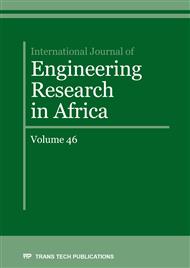p.63
p.76
p.88
p.106
p.125
p.146
p.168
p.180
p.189
Well Placement Technique and Production Optimization for Mature Field - A Case Study of L-X Field
Abstract:
A Well placement is a well-known technique in the oil and gas industry for production optimization and are generally classified into local and global methods. The use of simulation software often deployed under the direct optimization technique called global method. The production optimization of L-X field which is at primary recovery stage having five producing wells was the focus of this work. The attempt was to optimize L-X field using a well placement technique.The local methods are generally very efficient and require only a few forward simulations but can get stuck in a local optimal solution. The global methods avoid this problem but require many forward simulations. With the availability of simulator software, such problem can be reduced thus using the direct optimization method. After optimization an increase in recovery factor of over 20% was achieved. The results provided an improvement when compared with other existing methods from the literatures.
Info:
Periodical:
Pages:
168-179
Citation:
Online since:
January 2020
Authors:
Keywords:
Price:
Сopyright:
© 2020 Trans Tech Publications Ltd. All Rights Reserved
Share:
Citation:


